Content:
Gorgeous inflorescences that appear on these perennial shrubs at the beginning of summer will not leave anyone indifferent. Pleasant aroma, changing color of petals during flowering, high resistance to frost - that's why this perennial won the love of flower growers.
Hydrangea Silver Dollar (translated as "silver dollar") is one of the brightest representatives of this variety of flowering perennials. The main reasons for the popularity of this variety will be discussed below.
Briefly about culture
Hydrangeas are represented by a fairly large number of varieties - more than 75, each with a unique color of inflorescences. They grow in the form of a shrub or small tree. These beautiful flowering plants add exquisite beauty to any area. And even in a small area for these perennials, you can find a place, for example, to plant them around the perimeter of the garden instead of a fence as a hedge.
Under natural conditions, these perennials grow in some Asian countries, they are also found in Russia, including in some regions of the Far East.
These flowering plants belong to the Saxifrage family. Already from the name it is clear that hydrangeas have endurance, their aboveground and underground parts are powerful and strong.
Spherical inflorescences are formed at the ends of the stems of the current year. In some varieties, the shoots are so powerful that they do not lean to the ground under the weight of the flowers, but in most species, the inflorescences tend to the ground with the stems, as a result of which the bushes take a beautiful spherical shape.
The color of hydrangea depends primarily on the presence of hydrogen in the soil (it affects the acidity of the soil). If the seedlings of this flower are planted in acidic soil in which there is enough aluminum, a large amount of blue pigment is formed in the plant, as a result the color of the petals will be blue or blue (depending on the amount of substance in the soil). If the pH of the soil is neutral or alkaline, then the color of the flowers will turn pink.
Description of the variety
The characteristics of the hydrangea variety Silver Dollar will suit any grower. This perennial, shrub, reaching 1.4-1.6 m in height, and about 2-2.4 m in diameter.Since the plant is sprawling and lush, Silver hydrangea seedlings should be planted at a sufficient distance from each other and from others plants in the open field.
The branches of the bushes are strong, straight, during flowering they do not lean to the soil under the weight of the inflorescences, therefore they do not require a garter at the time of blooming. The bark of the branches is dark brown in color, smooth to the touch in young stems, and scaly and flaking in older ones.
The foliage is bright emerald in color, oval in shape, the edges are jagged. Small flowers are collected in volumetric cone-shaped inflorescences up to 23-27 cm long. The color of the petals is pure white, by the end of flowering it acquires a yellow or pinkish tint. The first buds appear in the first decade of July, hydrangea Dollar fades in late September - early October. The flowering nature is abundant.
The winter hardiness of this variety of panicle hydrangeas is high (up to −25 ° С), so Silver Dollar can be grown in most regions of Russia. However, in the northern regions, it is better to cover young plants for the winter with spruce branches or other materials in order to prevent young bushes from freezing in severe frosts.
Landing
Before you plant your Silver Dollar hydrangea, you should choose a suitable site for this. It should be:
- with diffused lighting;
- protected from gusts of cold wind;
- with sufficient soil moisture;
- with a certain soil composition.
It is best to plant plants in places where there is no direct sunlight, since hydrangeas do not grow and bloom well in well-lit areas. Therefore, it is best to find a slightly shaded place where these flowers will feel comfortable. If it was possible to choose only a sunny area for flower beds, then during hot hours these flowering perennials should be shaded.
All types of hydrangeas are very fond of moisture, so the top layer of the soil should always be moist, but there should be no stagnation of water in the soil. Although this perennial is unpretentious to the quality of the soil, the acidity should be neutral or slightly acidic, since hydrangea will die in alkaline soil over time. Neutral soil is usually acidified by adding high moor peat to the soil.
The size of the planting holes is 0.3 m in diameter, and up to 0.35 m in depth. When planting, they should be filled with a nutritious substrate consisting of garden soil, humus and river sand, taken in the following proportion: 2; 1; 1.
The root system is carefully straightened along the diameter of the pit, covered with prepared soil mixture, tamped and watered. At least 15 liters of water are added under each seedling. After watering, the near-stem circles are mulched with a thickness of about 5-6 cm. As mulch, you can use sawdust, high peat or crushed tree bark.
The nuances of care
Further care for the shrub consists of regular watering, pruning and top dressing.
Watering after planting the seedlings should be regular so that the soil does not dry out, otherwise the bushes will die. You also need to add moisture after dressing and during the period of bud formation.
Shoot pruning is carried out in the spring, before the buds begin to bloom. If for some reason it was not possible to carry out the procedure at this time, you can cut off the branches when the foliage blooms on them.
First of all, the stems of the last year are cut, and the shorter they are, the more abundantly they will bloom this season.
Diseases and pests
Hydrangea Silver Dollar and its stems are resistant to all types of diseases and pests. But, if the growers did not properly care for these bushes, then the following problems may arise:
- if the nutrient substrate was incorrectly compiled (its reaction became alkaline), then this leads to the development of chlorosis on the foliage;
- if there is not enough fertilizer in the soil, then this is immediately visible, since the foliage is covered with spots, the growth of shoots slows down, and the perennial begins to wither sharply. But these same symptoms can also indicate that the plant is affected by a fungus;
- if the hydrangea is planted in a too sunny place, then burns appear on the leaf plates;
- if the area where the hydrangeas are planted is blown too much by the cold wind, and also if the shoots are not properly cut, the bushes bloom worse.
Use in landscape design
Silver Dollar hydrangea is often used in landscaping, as this shrub blooms beautifully during the summer season and is of medium height.It is planted as a hedge, single plantings, and also in compositions with other flowers. It looks great in the background, behind shorter annuals and perennials. But it is important that the color of the plants planted nearby is combined with the color of the hydrangea, that is, be in white, pink or pale lilac tones.
If a florist chooses this variety, he will not regret his decision, since the shrub will bloom next year and will delight the eye all summer long until late autumn!
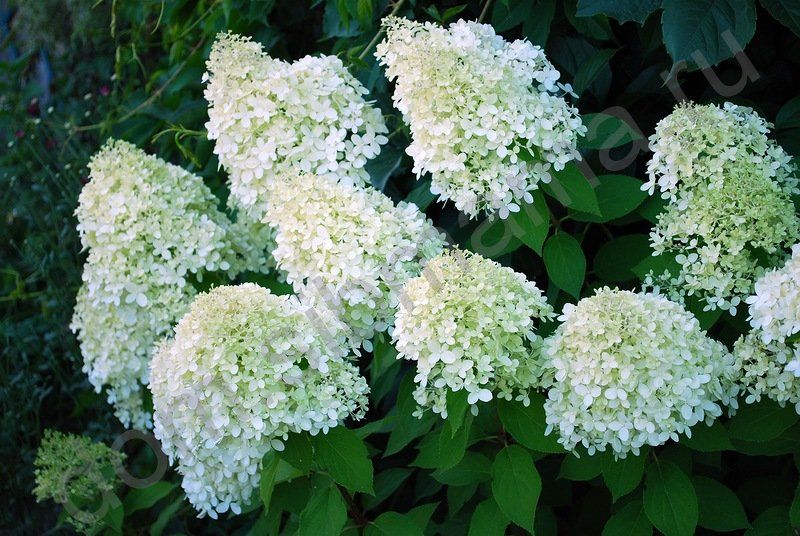
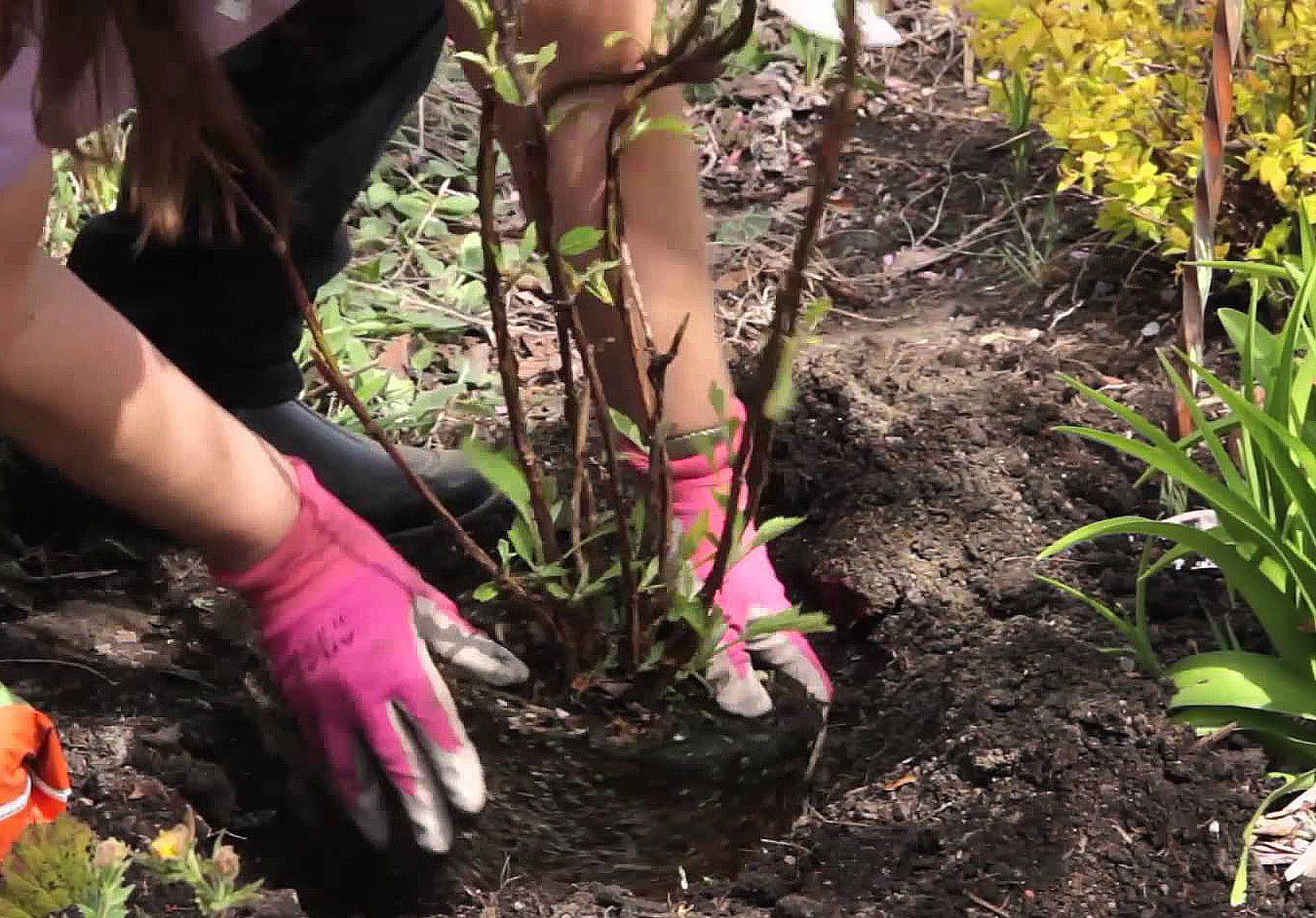
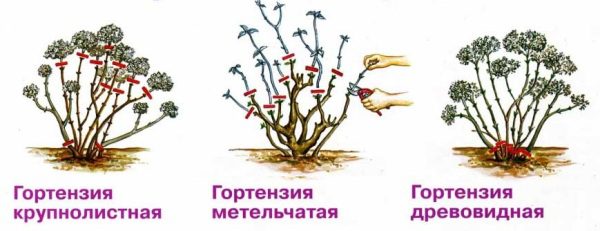
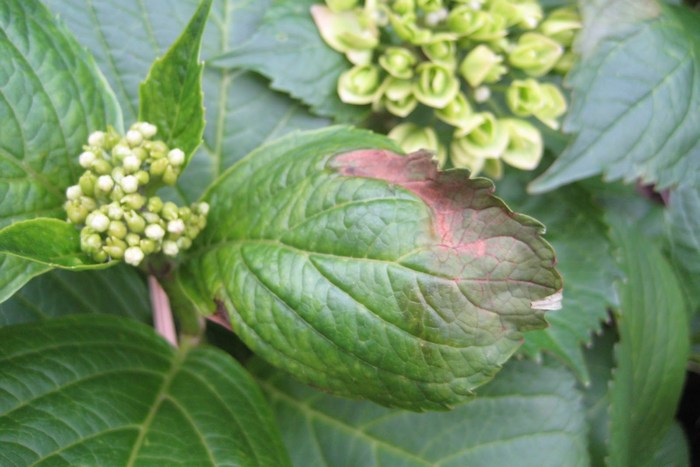
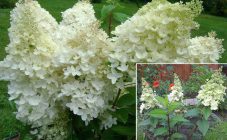
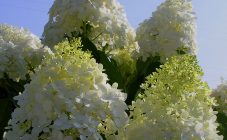
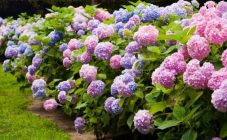
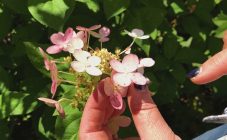
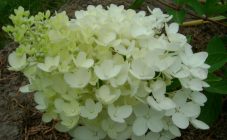
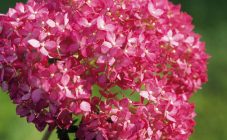







I like hydrangea very much, she is my queen among all flowers. I dropped her off in a place where there is sun, but not all day, at the front of the house. Now everyone who passes by admires this beauty.
Although, judging by their description, almost all varieties are very resistant and winter-hardy, however, in our gardens they grow relatively recently and have not been tested under extreme weather conditions. Perhaps some of them will be less hardy than Grandiflora. The winter hardiness of adult hydrangeas of this form is simply amazing: two such hydrangeas have been growing in my garden in the suburbs of St. Petersburg for more than 30 years, reaching a height of four meters. They did not suffer even during the critical frosts of -C in January 1986, as well as in other unfavorable winters with very damp, cold or unstable weather. At the same time, many other plants, in particular apple trees, suffered greatly.
The most popular species with a huge number of varieties. The plant owes its name to the shape of the inflorescences, which resemble a panicle (15-24 cm in length). The stunning appearance of hydrangea paniculata is complemented by excellent performance characteristics for growing in low winter temperatures.